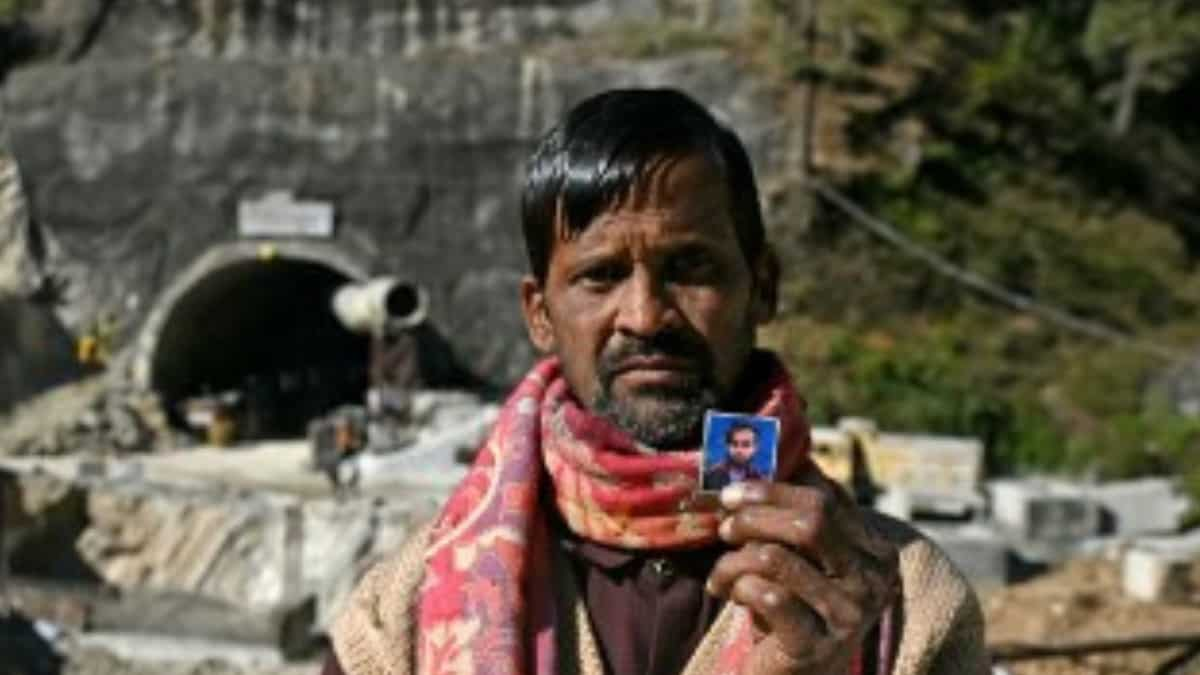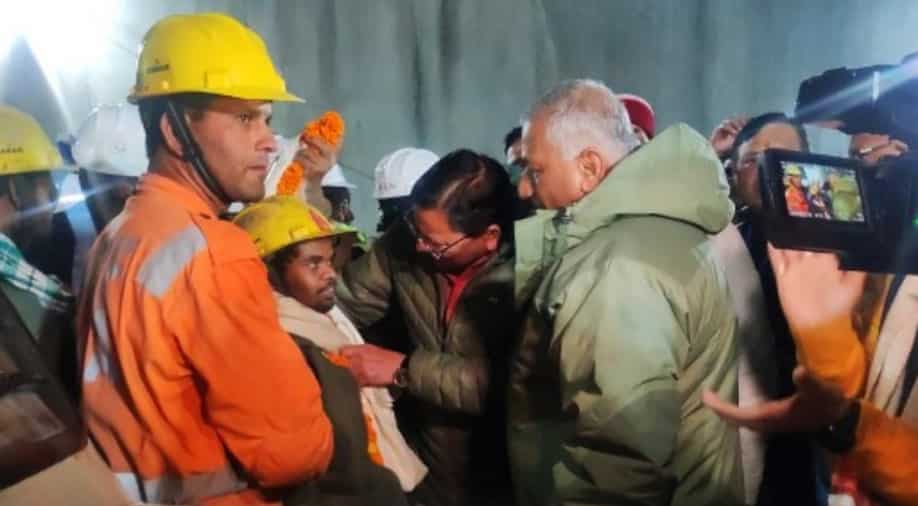Trapped by poverty, freed by a national ambition — Uttarakhand tunnel rescue sums up India of 2023
Story highlights
Uttarakhand tunnel rescue: The ambition of the world's fifth largest economy to grow beyond its current stature in the world, by utilising the offshoots of infrastructure upgrades — such as tourism — must be met with respect for human life above everything else.
When Diwali, the festival of lights was being celebrated all across India and the rest of the world, darkness fell upon 41 construction workers who got trapped in a tunnel in the Himalayas in northern India. Over 400 hours later, the 41 trapped workers saw all the light they could not see inside the darkness of that tunnel.
The 4.5 km Silkyara tunnel in Uttarakhand state, about 400 km north of New Delhi, is part of the ₹12,000 crore ($1.43bn) Char Dham Highway Development Project, one of the flagship infrastructure programmes of Prime Minister Narendra Modi's administration. The project has been branded as a way to ease travel to Hindu pilgrimage sites in the Uttarakhand state as well as all-weather connectivity for the movement of military equipment towards India's unresolved international boundary with a territorially assertive China.
Also watch | Char Dham Project | 'Need good roads to defend India,' states Centre
On November 12, the Silkyara tunnel caved into itself, around 200 metres from one end of the tunnel's entrance. Most of the 41 workers who were trapped hail from some of India's poorest districts. They fall into two salary brackets: ₹24,000 for skilled workers; and ₹18,000 for unskilled workers, such as labourers or helpers.
trending now
An Indian Express report quoted their relatives as saying that the men work 12 hours a day, seven days a week and can take two leave days in a month.
One of the trapped workers, Manjeet, is a 22-year-old from Lakhimpur Kheri in Uttar Pradesh state. His father, Chaudhary reached the site of the tunnel collapse on November 13, a day after the incident after taking a loan of ₹9,000 against his wife's jewellery.
Choudhary, shows a picture of his son Manjeet Kumar on Nov 21, 2023. The two were reunited on the night on Nov 22, 2023 | AFP
The administration gave Chaudhary a jacket and shoes and repaid the ₹9,000 loan.
Manjeet is now free from the weeks of the dark ordeal of that tunnel, but even after an anticipated allotment of government allowance, poverty awaits him at home, at least for the immediate future.
To the credit of Prime Minister Modi and his deadline-honouring transport minister Nitin Gadkari, India is getting an infrastructure upgrade on a scale unprecedented outside China and Japan. The world's fifth largest economy has added 50,000 km of national highway into its existing network in the past eight years.
While Modi's focus to enmesh India in a high-quality transport network has been designed to spread material prosperity with tourism as its first offshoot, its makers like Manjeet and 40 other rescued workers from that tunnel, are devoid of the same.
Successful rescue restores India's respect for human life but questions remain
The collaborative effort led by the Prime Minister's Office (PMO) to deploy 22 government agencies for the rescue of 41 trapped workers has been nothing short of remarkable. It took 17 days to avert a tragedy but it was averted nonetheless, restoring the sheer respect for human life in the process.
But the 17 days of rescue effort also underscored that the respect for human life in India is mostly a function of reaction to a crisis and not a default programming to the jugaad-intense psyche of Indian progress.
The crisis has exposed the gaps in the implementation of the standards for excavation and tunnelling, especially in the Himalayan states such as Uttarakhand.
According to an official readout from Prime Minister Narendra Modi's Cabinet Committee on Economic Affairs, dated Feb 20, 2018, the Silkyara Bend-Barkot tunnel in Uttarakhand was supposed to be built with an 'escape passage'.
A serving official at the National Highway Infrastructure Development Corporation Ltd (NHIDCL) told the Economic Times that the escape passage is supposed to be activated at the time of operation and is "not required" during construction.
The question now arises - Why safety during underground construction is a matter of one among many requirements and not first among all necessities?
A safety audit announced in response to the tunnel collapse may show how many more potential Silkyara-like crisis-posing tunnels are under construction across India among the 29 that are currently being built.
It may take more than a few months for that audit's findings to emerge.
But until then, the Silkyara tunnel crisis encapsulates the way India's leap forward to emerge as a global power is stuck between poverty of individuals like Manjeet and the collective negligence of the authorities involved in country's remarkable infrastructure upgrade.
The ambition of the world's fifth largest economy to grow beyond its current stature in the world, by utilising the offshoots of infrastructure upgrades — such as tourism — must be met with respect for human life above everything else.
(Disclaimer: The views of the writer do not represent the views of WION or ZMCL. Nor does WION or ZMCL endorse the views of the writer.)

















